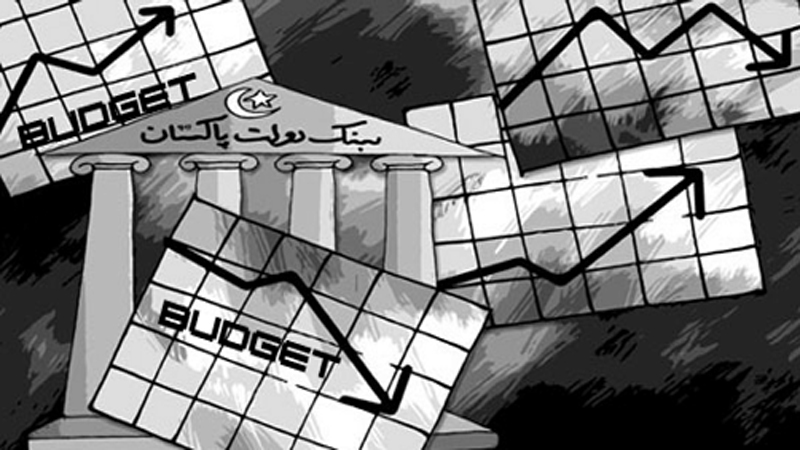After listening to Mr Salman Shah — a former caretaker Finance Minister — speak at a talk show, I decided to peruse the economic policies followed in the country over the past ten years.
The process of development in an underdeveloped country like Pakistan is held hostage by a lack of basic social and economic factors such as schools, technical institutions and research institutes, hospitals and railways, roads, ports, and bridges, etc. To provide these facilities requires significant investment.
Such investment leads to external economies of scale, which in turn provide incentives for the growth of private enterprise in the field of industry as well as agriculture. Investment in these economic overheads requires huge expenditures of capital which are usually beyond the capacity of private enterprise. Hence, it becomes the responsibility of the government to build up the necessary infrastructure.
Now follows a historical analysis of the economic policies followed over the last ten years.
The turbulent years of the PPP government:
When the Pakistan People’s Party government took charge in 2008 after nine years of military rule, Pakistan was on the brink of defaulting on its current account payments. Terrorism, floods, economic disability and several other catastrophes marked the five years of the PPP’s rule.
While both the US and Saudi Arabia refused to bail out Pakistan, China too offered little more than assistance in developing two nuclear power plants and promises of future investments. The central bank’s currency reserves, as a result, dipped to $4 billion, barely enough to cover payments for oil and other imports for two months. This phenomenon led to the Rupee slumping to a record low.
Pakistan was then forced to ask the International Monetary Fund for assistance in solving Pakistan’s balance of payments problem. In a $11.3 billion multi-year loan package, Pakistan received a $7.4 billion loan for 2008-10. The IMF stipulated stringent reform conditions, which included rebuilding the tax structure and privatising state enterprises.
The ‘Dar’ doctrine:
Reports of default emerged once again when the PML-N government took charge in 2013. Things slowly and gradually started changing for the better, however. The Pakistani army launched operations in Karachi, KP, FATA and some areas of Punjab to eliminate terrorism.
Mr Ishaq Dar took charge of the Finance ministry in 2013 and announced long term policies for the improvement of the economy. Presented below are some accomplishments of Mr Dar’s doctrine.
On 31st January 2014, the Japan External Trade Organisation described Pakistan as the 2nd best destination for investment.
Moody’s improved Pakistan’s outlook from negative to stable to positive. In April 2016, it published a report titled, ‘Government of Pakistan – B3 Stable’.
The International Bank for Reconstruction and Development, commonly known as the World Bank, resumed financing for Pakistan after Pakistan’s reserves increased.
It is the responsibility of the government to invest in infrastructure, this will serve as an impetus to the growth of private enterprise
The WTO’s Trade Policy Review of Pakistan in March 2015 noted Pakistan’s resilient economy and highlighted the fact that despite facing a plethora of challenges, Pakistan had managed to post positive growth during the review period.
Pakistan’s economic turnaround was also acknowledged in a research report published by Morgan Stanley on 30th January, 2015.
Pakistan was also reclassified as an Emerging Market by MSCI in June 2016, and therefore included in the MSCI Emerging Markets Index.
Forbes also acknowledged Pakistan’s economic turnaround in its report titled, ‘A global Turnaround Story’.
According to a Bloomberg report on 14th June, 2016, the Pakistan Stock Exchange (PSX) was declared Asia’s best market.
According to a Bloomberg report on the 28th of December, 2016, KSE-100 was declared the 5th best performing stock index globally in 2016.
According to an Atlantic Media Company report on the 22nd of July, 2016, Pakistan was described as one of the top emerging South Asian economies.
Barron’s Asia, a financial magazine, described Pakistan as the flag bearer of the positive changes taking place in the South Asia.
Pricewaterhouse Coopers, moreover, projected in February 2017 that Pakistan would become the 20th largest economy by 2030 and the 16th largest economy by 2050.
Pakistan was also taken off the black list and put on the grey list in 2014, and eventually on the white list by the Financial Assistance Task Force in 2015.
As Pakistan’s macroeconomic indicators stabilised and foreign reserves reached their highest level in Pakistan’s history, the Rupee also attained stability against the US Dollar. Thus, Pakistan’s economic performance was satisfactory between 2013 and 2017, and Pakistan attained a sustained trajectory of growth.
It has not been an easy ride for both governments since 2008, but I am confident that a continuation of democracy will bring stability at the economic front as well. Moreover, we should all support our armed forces in wiping out terrorism from Pakistan, while encouraging them to support the democratic elite in order to make Pakistan a peaceful and prosperous country.
The writer is a traveller and freelance writer based in UK. He can be contacted on husains50@yahoo.com
Published in Daily Times, May 6th 2018.

